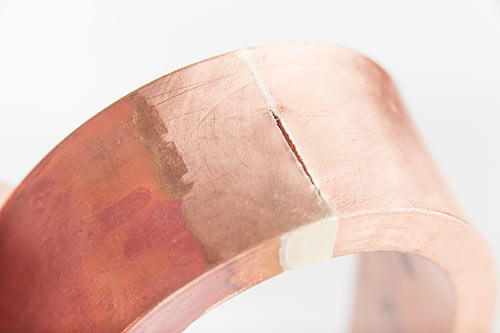
Mechanical and chemical characterisation
Tensile tests
This type of characterisation involves obtaining the main material tensile resistance parameters (Young´s Modulus, yield stress and ultimate tensile strength) as well as ductility parameters (strain under maximum load, strain at rupture or elongation, and reduction in area), the definition of the complete stress-strain curve and Ramberg-Osgood and Hollomon fittings.
Fatigue tests
Material characterisation under variable loading in situations where there is no pre-existing crack (e.g., S-N curves) and in situations where there is a pre-existing crack (e.g., Paris law).
Fracture tests (KIc, J, CTOD, Charpy)
Fracture characterisation of materials with linear-elastic conditions (KIc, Master Curve, etc) and with elastoplastic conditions (J-R curve, JIc, KJc, CTOD, etc).Also, Inesco Ingenieros provides the possibility of characterising the material through Charpy tests.
Small Punch Tests (SPT)
Characteristion of metallic materials by means of Small Punch Tests (SPT) to obtain tensile, fracture or creep properties.
Relaxation tests
Relaxation tests determining the stress relaxation throughout time when the material is subjected an imposed fixed strain.
Hardness tests
Inesco Ingenieros performs hardness tests (Brinell, Rockwell and Vickers), as well as microhardness measurements. Also, we have portable equipments for in situ tests.
Development of specific tests
The wide experience of Inesco Ingenieros in materials testing, together with its expertise on the subject, allows specific tests, not defined in international standards (and still of enormous interest for our clients), to be designed and developed.
Chemical characterisation of any type of materials
Inesco Ingenieros offers chemical characterisation tests using X-ray fluorescence spectrometry, arc emission spectroscopy, elemental analysis, Fourier transform infrared spectroscopy and EDX analysis.All this allows the chemical characterisation needs of our clients to be met.

